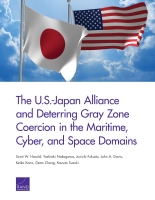By W.J. Hennigan
 The convoy of weather-beaten trucks and Toyota Land Cruisers kicked up dirt as it streaked across the wooded West African terrain toward the hazy horizon. A joint team of 12 U.S. Army Special Forces and 30 Nigerien troops were making the trek back to base after a two-day reconnaissance mission to a remote area along Niger’s border with Mali. The weary commandos had just spoken to elders near the village of Tongo Tongo after sifting through a deserted campsite, seeking intelligence on an elusive terrorist operative. But it was a dry hole; whoever was there had since moved along. As the mid-morning sun bore down, the commandos settled in for the 110-mile drive.
The convoy of weather-beaten trucks and Toyota Land Cruisers kicked up dirt as it streaked across the wooded West African terrain toward the hazy horizon. A joint team of 12 U.S. Army Special Forces and 30 Nigerien troops were making the trek back to base after a two-day reconnaissance mission to a remote area along Niger’s border with Mali. The weary commandos had just spoken to elders near the village of Tongo Tongo after sifting through a deserted campsite, seeking intelligence on an elusive terrorist operative. But it was a dry hole; whoever was there had since moved along. As the mid-morning sun bore down, the commandos settled in for the 110-mile drive.







